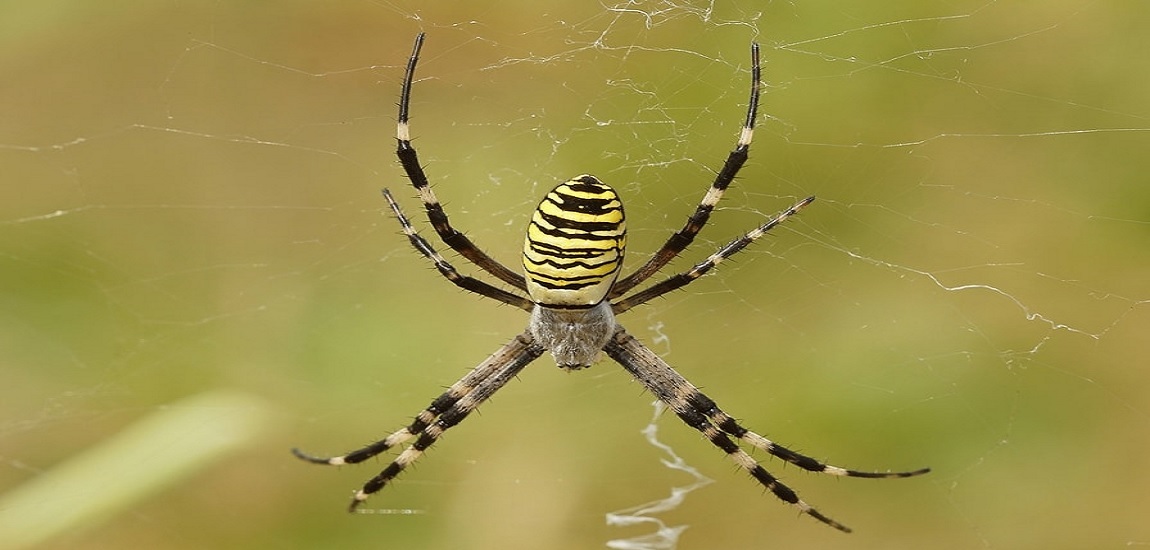If you’re looking for a spider that’s both beautiful and deadly, look no further than the garden orb weaver. These spiders are commonly found in gardens, hence their name, and they weave stunningly intricate webs. But be careful if you get too close – these spiders are also venomous!
The spider garden: an overview
Orb-weaver spiders or araneids are a large group of spiders that build elaborate webs. These webs may be built in trees, bushes, on the ground, or among human structures, and orb-weavers are commonly found in gardens, parks, and forest edges. Most orb-weavers build a new web each day. The old web is eaten for nutrition and to provide materials for the new web. Spiders are generally harmless to humans and can actually be beneficial because they eat harmful insects.
Most orb-weavers have a body length of about 0.5 inches (1 cm), but some tropical species can get much larger. The abdomen is usually rounded and often quite colorful. Males are often much smaller than females and may have different colors or patterns. Many orb-weaver species exhibit sexual dimorphism, meaning that the males and females look different from each other.
Orb-weaver spiders build their webs in a spiral pattern with sticky threads that capture flying insects. The spider waits in the center of the web for prey to become caught in the sticky threads. When an insect is caught, the spider quickly runs over to wrap it up in more silk and then bites it to inject paralyzing venom. The spider then takes the wrapped up prey back to the center of the web where it can feed at its leisure.

The orb weaver spider: an overview
The orb weaver spider is a member of the Araneidae family, and is one of the most common types of spiders found in North America. As their name suggests, these spiders build webs that resemble orbs, and can often be found in gardens and other outdoor areas.
Orb weaver spiders are generally benevolent creatures that do not pose a threat to humans. However, they can become a nuisance if they build their webs in an area where people frequent, such as a porch or entryway. These spiders are also capable of biting if they feel threatened, although their bite is generally not harmful to humans.
If you have an orb weaver spider in your garden or home, there is no need to be alarmed. These spiders are generally harmless and can even be beneficial, as they help to control insect populations. If you wish to remove an orb weaver spider from your property, there are a few simple methods that can be used.
The spider garden: a closer look
Spiders are some of the most fascinating creatures on the planet. They come in all shapes and sizes, and can be found in nearly every corner of the world. One of the most interesting and unique spider species is the garden orb weaver.
Garden orb weavers are spiders that build large, round webs in gardens and other outdoor areas. They are typically brown or black in color, with a large, bulbous abdomen. Garden orb webs can be up to two feet in diameter, and are often adorned with colorful decorations such as flowers or leaves.
These spiders are not aggressive, and will only bite humans if they feel threatened. If you find a garden orb weaver in your yard, you can simply leave it be – it will do no harm to you or your plants. In fact, these spiders are actually beneficial, as they help to control insect populations.
So next time you see a big, round spider web in your garden, take a closer look – you may just have a garden orb weaver living right in your own backyard!
The spider garden: benefits of having one
Orb-weaver spiders are the architects of the spider world. Their elaborate webs may be seen spun out in open areas among bushes and low vegetation, or between trees. The webs of some species are regularly rebuilt each day.
Orb-weavers range in size from very small to large. They are easy to identify by their round, wheel-shaped webs. The web may be vertical or horizontal, but always has a spiral arrangement of sticky threads.
Orb-weavers build their webs at night, often starting from the center and working their way out. After finishing the web, the spider waits in the center for prey to become entangled in the sticky spiral threads. When an insect or other small animal brushes against a thread, it sets off vibrations thattravel through the web to the spider’s body. The spider then rushes over to subdue its prey with venom injected through its fangs.
The benefits of having an orb-weaver spider in your garden are many. They help control pests by eating insects that would otherwise damage your plants. Some orb-weaver species will even eat smaller spiders, making them helpful in controlling harmful spider populations as well. In addition, these spiders are not considered dangerous to humans and will not bite unless provoked. So if you spot an orb-weaver in your garden, you can rest assured that it is there to help keep your plants healthy and pest-free!